Custom Website Design: Crafting a Digital Identity That Wows
Hey there, fellow web enthusiasts! Welcome to our blog, where we dive deep into the exciting world of web design. Today, we're taking a closer look at the art of crafting custom websites that leave a lasting impression on visitors. We'll be exploring the fascinating realm of custom website design and how it can help businesses and individuals alike establish a digital identity that truly wows.
In a world where online presence is everything, having a website that stands out is crucial. With millions of websites vying for attention, capturing the interest and engagement of users has become an art form in itself. This is where custom website design comes into play, offering a tailored approach to building an online platform that reflects your unique vision, values, and personality.
Why should I design custom websites when many templates and pre-made options are available? Well, statistics have shown time and time again that customised websites outperform their generic counterparts in terms of user engagement, conversions, and overall success.
According to a recent study by Stanford University, 75% of users admit to making judgments about a company's credibility based on their website design alone. That's a staggering number! A well-designed website can make or break that all-important first impression.
Additionally, a survey conducted by the Web Credibility Research team at Stanford revealed that 46% of users judge the credibility of a website based on its visual appeal and aesthetics. So, while content is undoubtedly important, the design elements play a significant role in establishing trust and engaging your audience.
Investing in a custom website design allows you to create a digital identity that aligns perfectly with your brand's personality and values. Each element, from the colour palette to the typography and layout to the interactive features, can be tailored to reflect your unique style and message.
With a custom website, you're not just another face in the crowd but a standout performer in a sea of mediocrity. You can showcase your brand's story visually, compellingly and captivatingly, leaving a lasting impression on visitors that keeps them returning for more.
So, whether you're a small business owner, an artist, or a blogger looking to make your mark online, custom website design is the secret ingredient that sets you apart from the competition. It's the digital equivalent of a tailored suit or a beautifully crafted piece of art—a reflection of your passion, professionalism, and dedication to excellence.
In the upcoming article, we'll delve deeper into the world of custom website design, exploring the key elements to consider, the latest trends to embrace, and the expert tips to ensure your digital identity leaves a lasting impact. Get ready to unleash your creativity and transform your online presence into something remarkable. Let's craft a digital identity that wows together!
Table of Contents
The Power of Custom Website Design

1.1 Enhancing Brand Identity
A website has become more than just a virtual storefront – It is a powerful tool to showcase your brand to the world. A custom website design allows you to craft a distinct and visually captivating online platform that embodies your brand's essence. It enables you to go beyond generic templates and create a unique digital experience that resonates with your target audience.
With custom website design, you can infuse your brand's personality, values, and aesthetics into every aspect of your website. It's an opportunity to shape an online presence that accurately represents who you are and what you stand for. By carefully selecting and customising elements such as colour schemes, typography, logos, and imagery, you can create a cohesive and harmonious visual identity that leaves a lasting impression on visitors.
Colour schemes are crucial in conveying emotions and setting the tone for your brand. With a custom website design, you can select colours that align with your brand's values and evoke the desired feelings in your audience. Whether you opt for bold and vibrant hues or subtle and sophisticated shades, the colour palette can help establish an immediate connection and create a memorable visual association with your brand.
Typography is another vital component of custom website design. The right fonts can enhance your website's aesthetics and readability while conveying a specific mood or tone. By selecting fonts that align with your brand's voice, you can reinforce its identity and ensure consistency across all communication channels.
A well-crafted logo serves as the visual cornerstone of your brand. Incorporating your logo seamlessly into your website design reinforces brand recognition and adds a professional touch. A custom website design allows you to strategically position and integrate your logo, ensuring it is prominently displayed in a visually appealing and memorable way.
Imagery is a powerful storytelling tool that can bring your brand to life. You can curate a visual collection that resonates with your brand's narrative through custom website design. By carefully selecting and optimising images that align with your brand's values and messaging, you can create an emotional connection with your audience and leave a lasting impression.
1.2 Tailoring User Experience
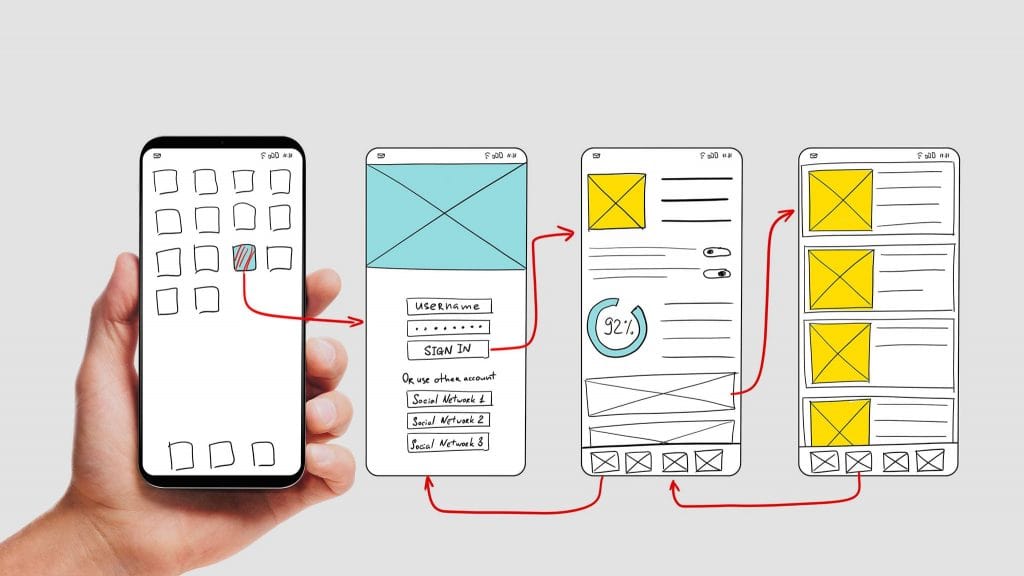
Every successful business recognises its target audience's unique preferences, behaviours, and expectations. While generic templates or pre-built themes may provide a quick and easy solution, they often fail to capture the essence of these specific needs. This is where custom website design emerges as the optimal choice, enabling you to create an unparalleled user experience that precisely aligns with your audience's expectations.
The first step towards achieving a successful custom website design is conducting thorough research on your target market. By delving deep into your audience's demographics, interests, and online behaviours, you gain valuable insights that shape the foundation of your design strategy. Understanding their needs, pain points, and desires allows you to craft a profound website that resonates with them.
Applying user-centred design principles is paramount in this process. It involves placing the user at the forefront of every decision, ensuring that their needs and preferences drive the design choices. By taking into account user feedback, conducting usability tests, and analysing user behaviour patterns, you can create an intuitive navigation system that allows visitors to explore your website effortlessly. A seamless user experience keeps visitors engaged and encourages them to spend more time on your site, increasing the likelihood of conversions.
Moreover, personalised content is pivotal in connecting with your target audience. You create a sense of familiarity and relevance by tailoring your content's messaging, imagery, and overall presentation to match their interests and aspirations. Visitors are likelier to engage with content that speaks directly to them, fostering a deeper connection with your brand. This personalised approach enhances user engagement and establishes a strong foundation for building long-term relationships with your audience.
A custom website design also provides the flexibility to integrate specific features and functionalities that cater to your audience's unique requirements. Whether incorporating an interactive product configurator, a seamless e-commerce platform, or a user-friendly booking system, you can optimise your website to streamline the user journey and enhance their overall experience. By removing any friction points or barriers to engagement, you create a favourable environment that encourages visitors to convert into loyal customers.
The Benefits of Custom Website Design
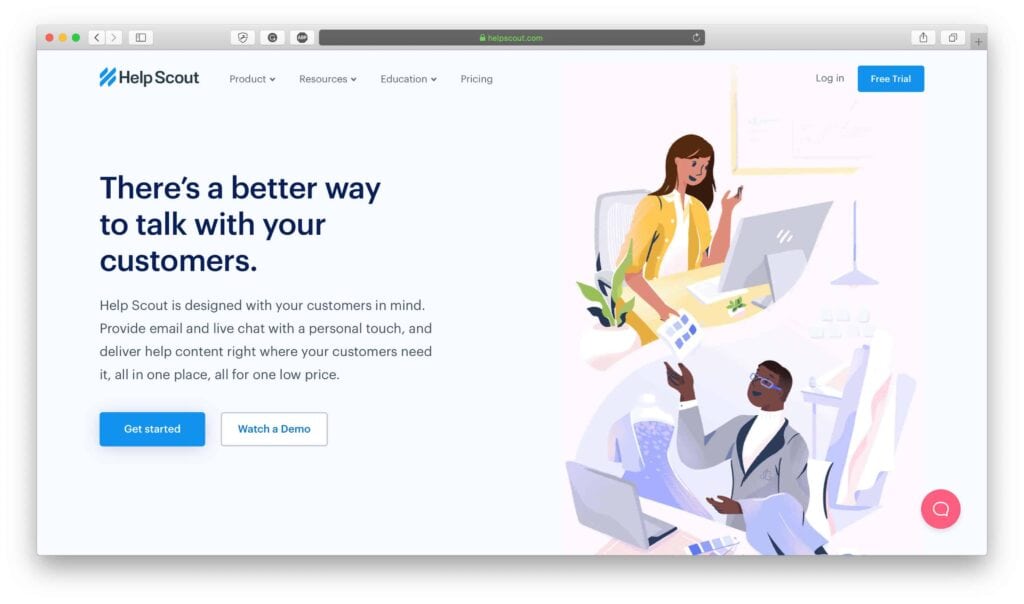
2.1 Improved Brand Perception
In today's digital age, a professionally designed and custom website is more crucial than ever in establishing a robust online presence for your business. It serves as the virtual face of your brand, communicating your values, offerings, and expertise to a global audience. Beyond its visual appeal, a well-crafted website has the power to evoke credibility and trustworthiness among your target audience.
Numerous studies have emphasised the significant impact of website design on user perception. Notably, a study conducted by Stanford University revealed that an astonishing 75% of users judge a company's credibility based on the design of its website. This statistic underscores the vital role that aesthetics and user experience play in influencing visitors' trust and confidence in your brand.
By investing in a custom website design, you take a proactive step towards enhancing your brand's perception. A professionally designed website showcases your commitment to quality and attention to detail, reflecting the excellence you bring to your products or services. Customisation allows you to align the visual elements with your brand identity, ensuring consistency across all touchpoints and creating a cohesive brand experience.
When visitors encounter a visually appealing and user-friendly website, it instils a sense of confidence in their minds. They are more likely to perceive your business as credible and trustworthy, increasing the chances of further engaging with your offerings. A custom website's seamless navigation, intuitive layout, and compelling visual elements create an enjoyable user experience, encouraging visitors to explore your content and take desired actions.
Moreover, a custom website design enables you to tailor the user journey and optimise it for conversions. By strategically placing calls-to-action, emphasising key messages, and structuring the content flow, you can guide users towards desired outcomes such as purchasing, submitting inquiries, or subscribing to your newsletter. A well-crafted website becomes an effective tool for driving conversions and achieving your business goals.
In addition to enhancing credibility, a custom website design also sets you apart from your competitors. It allows you to differentiate your brand in a crowded digital landscape, showcasing your unique value proposition and distinguishing you from generic templates or cookie-cutter designs. Your website reflects your brand's personality, fostering a memorable and impactful impression on visitors.
2.2 Enhanced Search Engine Optimisation (SEO)
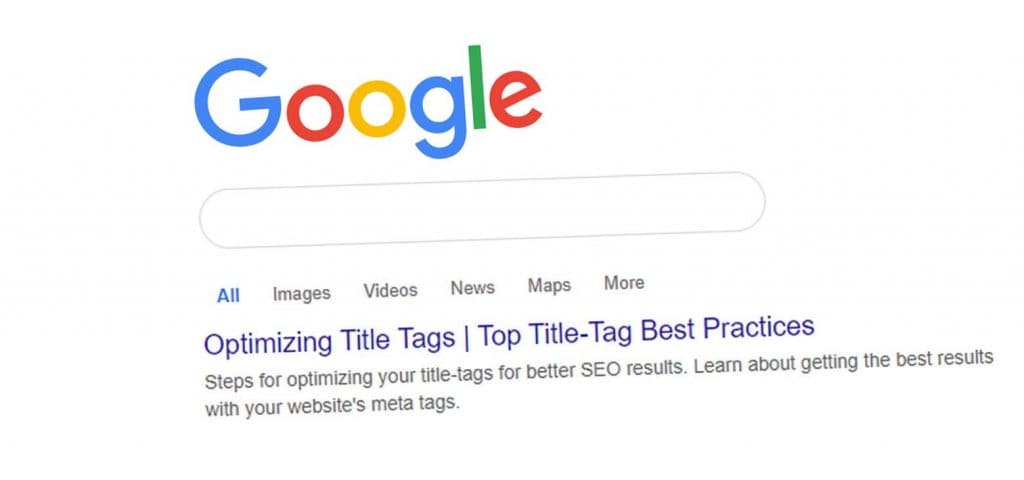
The impact of custom website design on search engine optimisation (SEO) cannot be overstated. When improving your website's search engine rankings, a well-designed and optimised website can make a difference. You can maximise your SEO efforts and enhance your online visibility by focusing on critical factors such as clean code, page load speed, and structural organisation.
Clean code is an essential element of a custom website design that positively affects SEO. Search engine crawlers rely on clean, well-structured code to accurately understand and index your website. By using semantic HTML markup, proper heading hierarchy, and efficient CSS styling, you can ensure that search engines can quickly parse and interpret your website's content. This enables them to identify the relevant keywords and topics associated with your web pages, ultimately boosting your chances of ranking higher in search results.
Optimising page load speed is another crucial aspect of custom website design for SEO. Studies have shown that website speed directly impacts user experience and search engine rankings. Visitors expect fast-loading websites, and search engines prioritise sites that deliver a seamless browsing experience. You can significantly enhance your website's speed by implementing optimisation techniques such as image compression, browser caching, and minification of CSS and JavaScript files. This improves user engagement and signals to search engines that your site is reliable and deserves a higher ranking.
Structuring your website with SEO is vital for maximising your visibility in search engine results. Custom website design offers the advantage of tailoring your website's structure and navigation to align with SEO best practices. By organising your content into logical sections and using descriptive URLs, you create a user-friendly experience while enabling search engines to understand the hierarchy and relevance of your pages. Additionally, breadcrumb navigation and internal linking strategies can improve crawlability and make it easier for search engines to discover and index your website's content.
One of the most significant benefits of custom designs is the seamless implementation of on-page SEO techniques. With a custom website, you can optimise your content using targeted keywords, meta tags, and structured data markup. By strategically incorporating relevant keywords in your page titles, headings, and body text, you enhance your website's relevance for specific search queries. Furthermore, crafting compelling meta descriptions and title tags entices users to click on your search listings and provides search engines with valuable context about your content. Additionally, by leveraging structured data markup, such as schema.org, you can provide search engines with additional information about your content, leading to rich search results with featured snippets, reviews, and other eye-catching elements.
2.3 Competitive Edge
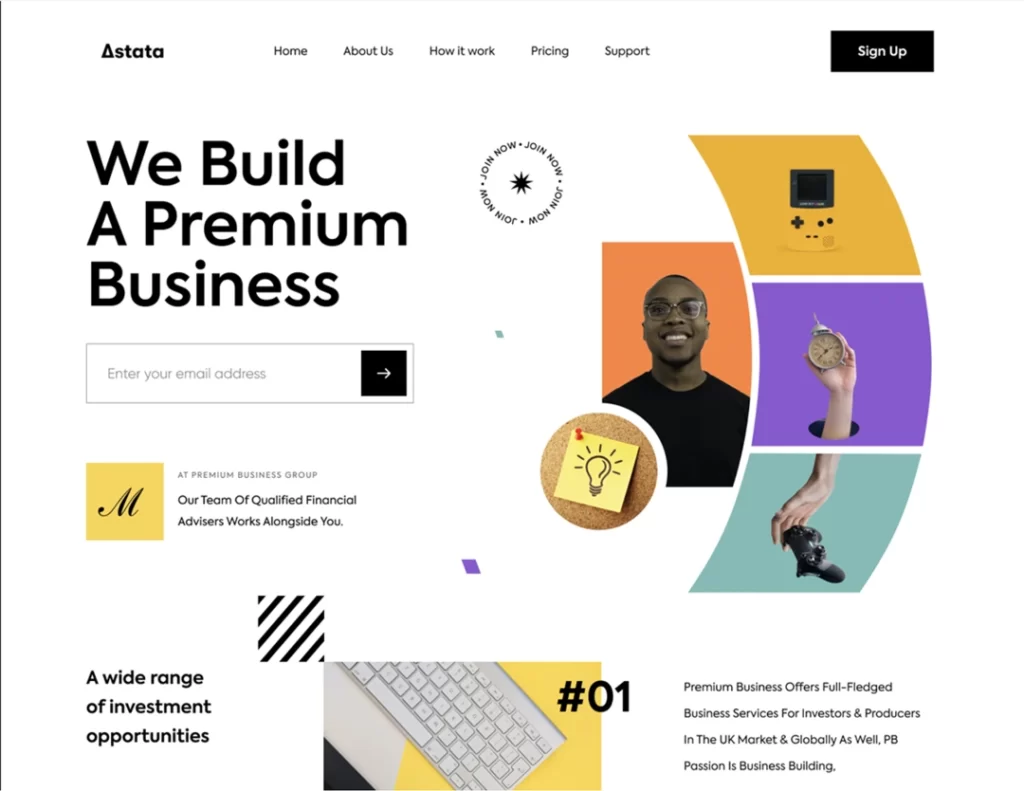
One powerful tool for achieving this is custom website design, which offers a distinct advantage by setting your brand apart from competitors. Investing in a well-designed, tailor-made website that embodies a unique visual identity creates an engaging and captivating experience for your visitors.
Unlike generic templates commonly used by many businesses, a custom website design enables you to showcase your brand's personality, values, and unique selling points. You create a cohesive and immersive online environment by aligning the design elements with your brand identities, such as colour schemes, typography, and imagery. This immersive experience captures visitors' attention and leaves a lasting impression in their minds.
When your website has a distinctive and memorable visual identity, it reinforces your brand's image and message. It ensures that your business remains top of mind when customers are making decisions or looking for solutions. By providing a memorable user experience, you increase the likelihood of visitors returning to your website and engaging further with your products or services.
Moreover, custom website design can significantly contribute to brand recognition. When customers encounter a consistent and visually appealing representation of your brand across various touchpoints, it reinforces their familiarity and trust. They are likelier to remember and recommend your brand to others, increasing visibility and word-of-mouth marketing.
Using generic templates, you also foster customer loyalty by setting yourself apart from competitors. A custom website design demonstrates that you value your customers' experience and invest in providing them with a unique online journey. This attention to detail and personalisation builds trust, establishes credibility, and fosters a sense of loyalty among your customers. They feel valued and are likelier to choose your brand over competitors, leading to long-term customer relationships.
Combining a well-designed, custom website and a distinct visual identity can drive business growth. It positions your brand as a leader in your industry, attracting new customers and retaining existing ones. The competitive edge gained through custom design can translate into increased conversions, sales, and revenue. As your brand stands out from the competition and leaves a lasting impact on visitors, you pave the way for sustainable growth and success.
Best Practices for Custom Website Design

3.1 Define Your Goals and Target Audience
To embark on a successful design process, it is essential to prioritise two fundamental aspects: defining your goals and gaining a thorough understanding of your target audience. This crucial step lays the foundation for creating a website that meets your objectives and resonates with your ideal customers. By delving into the specifics of your goals and identifying your target audience, you can align your design choices with their needs and expectations, ultimately resulting in a website that is not only visually appealing but also highly effective and impactful.
When considering the goals of your website, it is crucial to outline clear and specific objectives you aim to achieve. Ask yourself: What do you want your website to accomplish? Are you looking to increase brand awareness, generate leads, drive sales, or provide valuable information to your visitors? Each objective will have unique design implications, influencing your website's layout, navigation, content structure, and interactive elements.
Simultaneously, gaining a deep understanding of your target audience is crucial. By identifying your ideal customer, you can create a website that speaks directly to them, addressing their specific needs and preferences. Take the time to research and analyse your target audience's demographics, behaviours, interests, and motivations. What challenges do they face? What are their goals and aspirations? By empathising with your audience, you can tailor your design choices to effectively engage and resonate with them, fostering a positive user experience.
By comprehensively understanding your goals and target audience, you can strategically align your design choices with their needs and expectations. This alignment creates a cohesive and intuitive user experience, ensuring visitors can easily navigate your website, find the information they seek, and take the desired actions. From selecting an appropriate colour scheme and typography to crafting compelling content and intuitive navigation menus, every design element should be thoughtfully considered in the context of your goals and audience.
Moreover, an effective website goes beyond aesthetics and visual appeal. It should also consider usability, responsiveness, and accessibility. Ensuring your website is user-friendly and compatible with various devices and browsers enhances the overall user experience and widens your reach.
Regularly monitoring and analysing user behaviour, feedback, and analytics can provide valuable insights into the effectiveness of your design choices. You can continuously refine and optimise your website by leveraging these insights to meet your audience's evolving needs and expectations.
- Frain, Ben (Author)
- English (Publication Language)
- 498 Pages – 09/19/2022 (Publication Date) – Packt Publishing (Publisher)
3.2 User-Centred Design Approach
Implementing a user-centred design approach is crucial to building a successful website that is intuitive and user-friendly website while effectively catering to your audience's preferences. You can gain valuable insights into your target audience's behaviours, motivations, and pain points by conducting comprehensive user research, creating detailed personas, and developing user journeys. Armed with this knowledge, you can make informed design decisions that will allow you to craft a seamless user experience, ultimately addressing their needs and driving higher engagement and conversions.
To begin with, conducting user research is essential to understanding your audience. This involves collecting data and feedback from real users through surveys, interviews, or usability testing. By delving into their preferences, habits, and expectations, you can deeply understand what they seek from your website.
Once armed with user research insights, creating personas becomes vital. Personas are fictional representations of your target audience segments encompassing their demographic information, goals, and characteristics. Developing these personas allows you to humanise your audience, ensuring that every design decision aligns with their needs and aspirations. For example, suppose your website caters to both tech-savvy millennials and older adults seeking simplicity. In that case, your personas can guide you in striking the right balance between a sleek interface and an intuitive layout.
Alongside personas, constructing user journeys is another valuable tool in your arsenal. User journeys outline the steps users take to achieve specific goals on your website. By mapping out these journeys, you gain insight into the user's mindset, the obstacles they might encounter, and the touchpoints where their needs should be met. With this knowledge, you can design a user experience that seamlessly guides them through their desired actions while addressing any pain points they may encounter. Whether streamlining the checkout process or providing clear navigation paths, user journeys empower you to optimise every interaction with your website.
By leveraging the findings from user research, personas, and user journeys, you can make informed design decisions that enhance your website's usability and engagement. From intuitive navigation menus and prominent calls-to-action to visually appealing layouts and personalised content, every aspect of your website should be tailored to provide a delightful experience for your users.
Moreover, the user-centred design approach ensures your website remains dynamic and adaptable. By continuously collecting feedback, conducting usability tests, and analysing user behaviour metrics, you can identify areas for improvement and refine your design iteratively. Regularly reassessing and optimising your website based on user insights will help you stay aligned with your audience's evolving preferences, ensuring a lasting and fruitful relationship with your users.
3.3 Responsive and Mobile-First Design

Mobile devices have become the primary means of internet access, surpassing desktop usage. As a result, it is crucial to strongly emphasise responsive and mobile-first design when creating a custom website. A successful website design should seamlessly adapt to different screen sizes, guaranteeing an exceptional user experience across all devices.
The significance of mobile-friendly websites extends beyond mere convenience. Search engines now prioritise mobile-friendly websites in their algorithms, granting them preferential treatment in search results. This means that having a responsive design can significantly improve your website's visibility and organic traffic. By embracing a mobile-first approach, you enhance the user experience and position your website for tremendous success in the ever-evolving world of online search.
Incorporating a mobile-first strategy caters to your current audience's needs and helps future-proof your website. With the continual growth of the mobile audience, it is vital to ensure that your website remains relevant and accessible across all platforms. Investing in a responsive design can save time and resources that would otherwise be spent retrofitting your website to accommodate mobile users later.
A mobile-first approach encourages a holistic perspective on design, urging web developers and designers to prioritise the needs and preferences of mobile users throughout the entire design process. This mindset fosters a streamlined and user-centric experience, where the website's layout, navigation, and content are optimised for mobile consumption. Doing so engages your audience more effectively, ultimately driving higher conversion rates and improved customer satisfaction.
It is important to note that mobile-first design does not imply neglecting desktop users. Instead, it emphasises starting the design process with mobile devices in mind and progressively enhancing the experience for larger screens. Adopting this approach ensures a seamless transition from mobile to desktop, maintaining a cohesive brand experience across all platforms.
- Beaird, Jason (Author)
- English (Publication Language)
- 282 Pages – 10/13/2020 (Publication Date) – SitePoint (Publisher)
3.4 Intuitive Navigation and Clear Calls to Action
To achieve a successful website, it is essential to prioritise effective navigation and ensure clear calls to action throughout. When visitors land on your website, their ability to navigate effortlessly and find the information they need without confusion is crucial. By strategically placing calls to action, you can guide your visitors towards desired activities, whether purchasing, filling out a form, or reaching out to your business.
One of the critical aspects of a well-designed website is intuitive navigation menus. These menus serve as a roadmap for visitors, helping them seamlessly explore different sections and pages. A well-organised and user-friendly navigation system lets users quickly locate the information they seek, enhancing their overall browsing experience. This can be achieved by employing a clear and logical structure, categorising content appropriately, and utilising intuitive labels for menu items. By reducing cognitive load and minimising the effort required to navigate, you create an environment where visitors can engage with your website more effectively.
Equally important are the calls to action (CTAs) strategically placed throughout your website. A call to action is a prompt that encourages visitors to take a specific action that aligns with your business goals. These CTAs serve as signposts, directing users towards desired activities and encouraging them to convert into customers, leads, or engaged users. Whether it's a prominently displayed “Buy Now” button on a product page, a compelling invitation to sign up for a newsletter, or a clear phone number for contact, well-crafted CTAs provide clear direction and motivate visitors to take the desired steps.
Crafting compelling calls to action involves several elements. Firstly, the language should be persuasive and action-oriented, tempting visitors to act immediately. By incorporating action verbs and creating a sense of urgency, you can increase the likelihood of conversions. Additionally, the design and placement of CTAs play a vital role. CTAs should be visually distinct, standing out from the surrounding content to grab attention. They should be placed strategically, considering the user flow and ensuring they are easily accessible on desktop and mobile devices.
Regular analysis and testing of your website's navigation and CTAs are crucial for optimising their effectiveness. Monitoring user behaviour, conducting A/B tests, and analysing conversion rates can gather valuable insights into what works best for your audience. This iterative process allows you to continuously refine your website's navigation and CTAs continuously, ensuring a seamless user experience and driving higher conversions over time.
3.5 Consistency and Cohesion
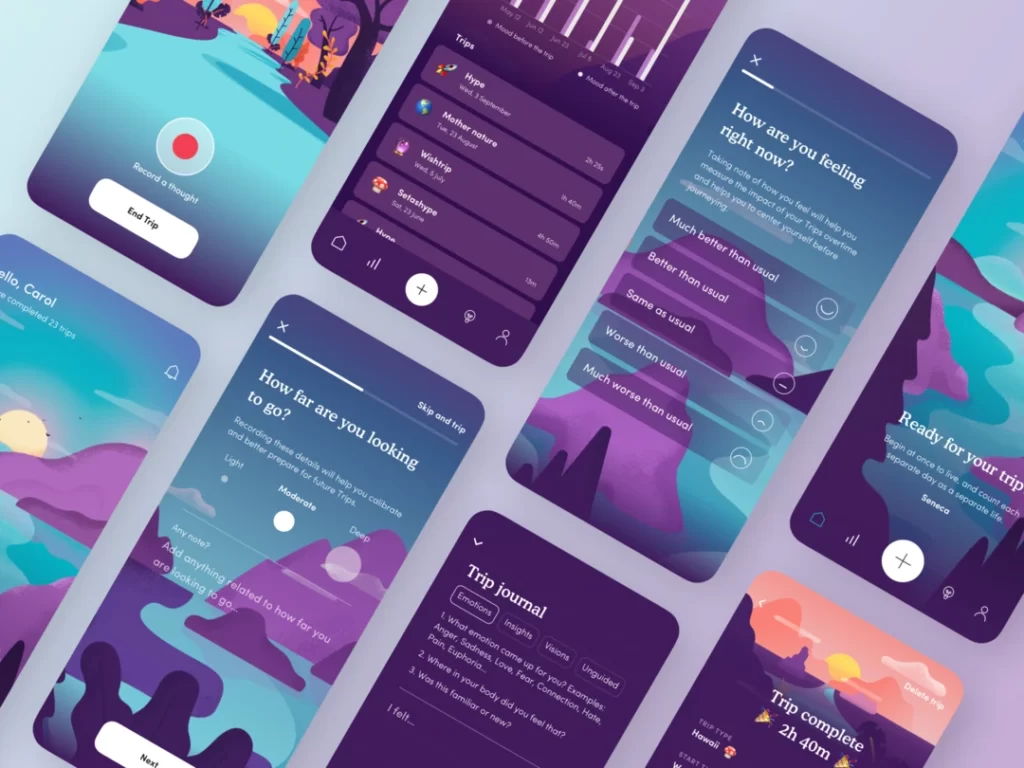
Consistency and cohesion are vital when designing a visually appealing and user-friendly website. By paying attention to various design elements such as colour schemes, typography, imagery, and iconography, you can create a cohesive and polished website that leaves a lasting impression on your visitors.
One key area to focus on is maintaining visual harmony throughout your website. This involves ensuring that the chosen colour schemes, typography styles, and graphical elements complement each other and work together seamlessly. These design elements are consistently applied across all pages, enhancing the overall user experience and reinforcing your brand identity. Visitors will appreciate the coherent and unified visual presentation, which instils a sense of professionalism and reliability.
Visual consistency is not limited to the aesthetic elements alone. It also extends to your content's formatting, layout, and voice. Consistent content formatting ensures that text is presented clearly and organised, making it easier for visitors to read and understand. A consistent design across different pages maintains familiarity and navigational ease, allowing users to find the necessary information quickly. Additionally, keeping a consistent voice and tone throughout your website's content helps to create a cohesive narrative and brand messaging, reinforcing your identity and establishing trust with your audience.
By adhering to design standards and maintaining visual consistency, you create a website that exudes professionalism and instils confidence in your visitors. Users who encounter a visually cohesive and polished webpage are more likely to perceive your brand as trustworthy and credible. This positive impression enhances the user's overall experience, increasing the likelihood of them staying on your site longer, engaging with your content, and taking desired actions such as purchasing or subscribing to a service.
- Andrews, Gill (Author)
- English (Publication Language)
- 199 Pages – 11/08/2019 (Publication Date) – Independently published (Publisher)
Conclusion
Custom website design holds immense potential for businesses to establish a robust online presence and effectively connect with their target audience. Custom website design offers many advantages, from enhancing brand identity and tailoring the user experience to reaping the benefits of improved brand perception and search engine optimisation.
By following best practices such as defining goals and target audience, adopting a user-centred design approach, prioritising responsive and mobile-first design, focusing on intuitive navigation and clear calls to action, and maintaining consistency and cohesion, you can unlock the true power of custom website design and create a digital masterpiece that wows visitors and drives business success.
Embrace the endless possibilities of custom website design, and embark on a journey to captivate, engage, and convert with your digital presence. Let your website become a true reflection of your brand and a gateway to unforgettable user experiences.
Last update on 2024-05-03 / Affiliate links / Images from Amazon Product Advertising API



